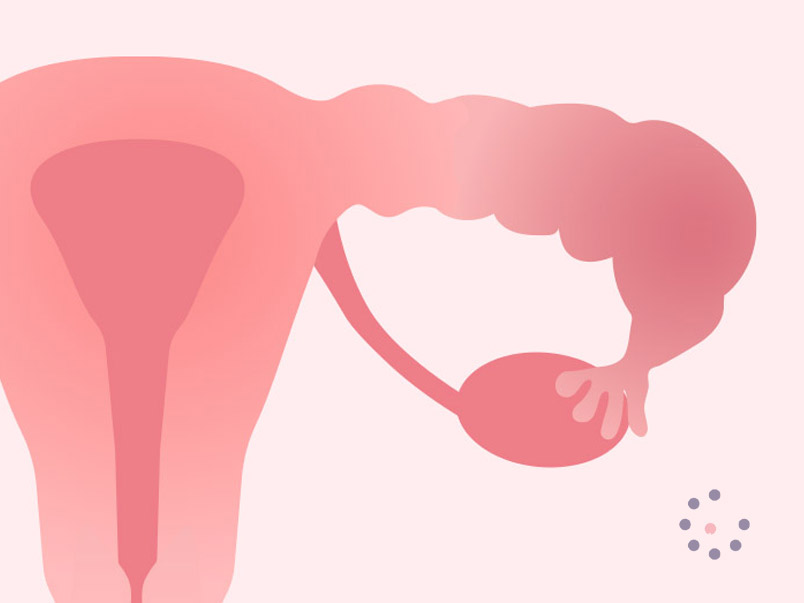blog tambre
How does hydrosalpinx threaten fertility and how can we solve it?

Table of contents
Hydrosalpinx is a gynaecological condition that affects a significant number of women in Spain and worldwide. This condition can have important implications for the fertility and quality of life of women who suffer from it, so in this article we will explore the concept of hydrosalpinx, its diagnosis and the treatment options available to alleviate its symptoms and increase the chances of conceiving a baby.
Hydrosalpinx: understanding the concept
Hydrosalpinx is an abnormal accumulation of fluid in the fallopian tubes, causing them to become blocked or dilated. This condition can be unilateral or bilateral, depending on whether it affects only one tube or both, and is usually caused by previous infections, such as sexually transmitted infections (chlamydia or gonorrhoea, for example) or pelvic inflammatory disorders.
This damages the fallopian tubes, causing blockages that prevent the sperm from meeting the egg and, in some cases, also hinder embryo implantation. Hydrosalpinx affects a significant number of women of reproductive age. The most common symptoms include chronic pelvic pain, dyspaurenia (pain during intercourse) and menstrual disorders. However, it is important to note that some women may be asymptomatic and discover the condition only when they are looking to have a baby and contact assisted reproduction professionals for fertility treatment.
How is hydrosalpinx diagnosed?
Diagnosis of hydrosalpinx involves a thorough assessment of the patient’s medical history, followed by various medical tests, which are mentioned below:
-Hysterosalpingography: this traditional technique consists of the inoculation of a dye medium into the cervix, which allows the visualisation of the fallopian tubes and the uterine cavity by means of X-rays.
-Hysterosalpingosonography: although both this test and the previous one are used to study the patency of the fallopian tubes, the latter involves fewer risks than hysterosalpingography, as it does not use radiation, but is carried out by means of a transvaginal ultrasound scan. At Tambre we perform what is known as HyFoSy (Hysterosalpingo-Foam-Sonography), since instead of using iodine-based contrast medium, we use a “foam” called ExEm® Foam, which is composed of ExEm® Gel – hydroxyethylcellulose and glycerol and ExEm® Water – purified water.
-Laparoscopy: this is a more complex diagnostic technique than the previous ones, as it is invasive, is performed in the operating theatre and requires the use of anaesthesia. The procedure involves making an incision in the woman’s abdomen, through which, thanks to an endoscope, the abdominal cavity and fallopian tubes can be seen directly, thus confirming the diagnosis.
-Transvaginal ultrasound: this technique does not allow the Fallopian tubes to be observed, although in severe cases of hydrosalpinx, their dilatation can be seen.
How can I become a mother if I have been diagnosed with hydrosalpinx?
At Tambre we have received many patients over the years who have come to us with a diagnosis of hydrosalpinx or who have been diagnosed with it once they have met us.
It should also be noted that at our centre we always opt for surgical treatment before performing the treatment, as the tubes are not recoverable and the fluid that can accumulate is toxic for the embryo.
The treatment we most commonly use for women suffering from hydrosalpinx is In Vitro Fertilisation. This is carried out by fertilising the egg in our assisted reproduction laboratory with sperm, either from a male partner or from a donor from our bank. IVF is recommended for women over 35 years-old, who have a low ovarian reserve, fallopian tube pathologies (as is the case of the article we are covering today), women who have suffered previous failures in Artificial Insemination treatments or for couples who either need to incorporate Preimplantational Genetic Testing into their cycle, or are facing difficulties related to the male factor.
In very specific cases, if the hydrosalpinx is unilateral, the medical team may recommend Artificial Insemination. However, it should be borne in mind that this technique is only indicated for very specific cases of young patients.
As we have learned, hydrosalpinx is a gynaecological condition that can negatively affect a woman’s fertility and quality of life. It is important to seek an accurate diagnosis in order to explore the most appropriate treatment options. Assisted reproduction has proven to be an effective solution for many women who wish to have a baby despite being diagnosed with this condition. If you suspect you may have hydrosalpinx or are experiencing difficulty conceiving, do not hesitate to consult with our fertility specialist team to receive the appropriate guidance, treatment and support.
